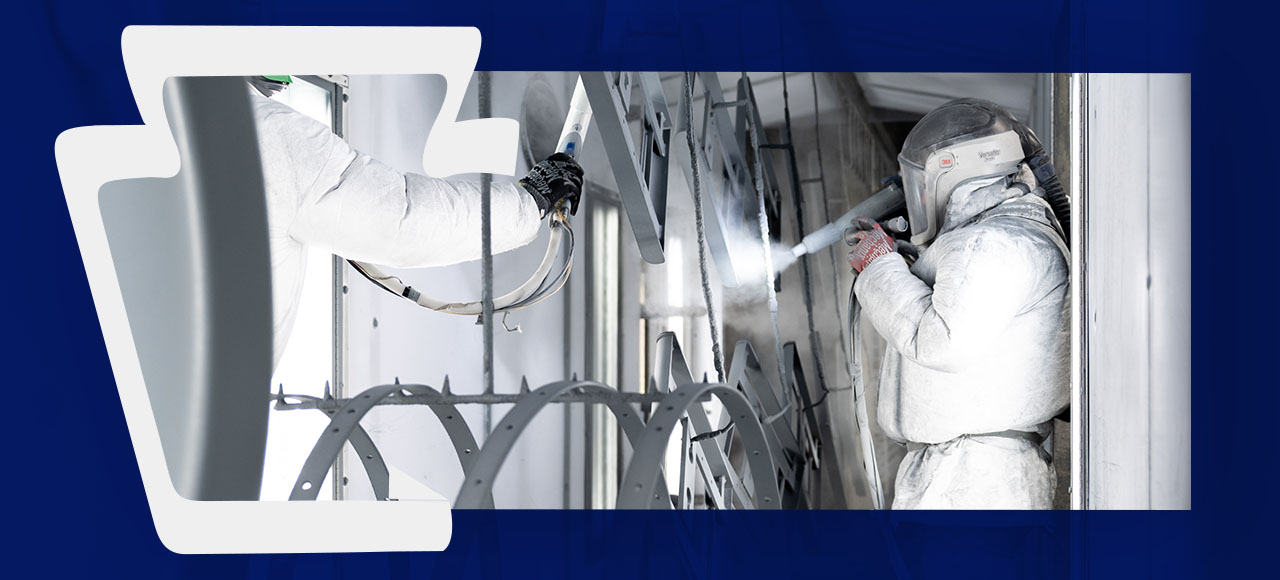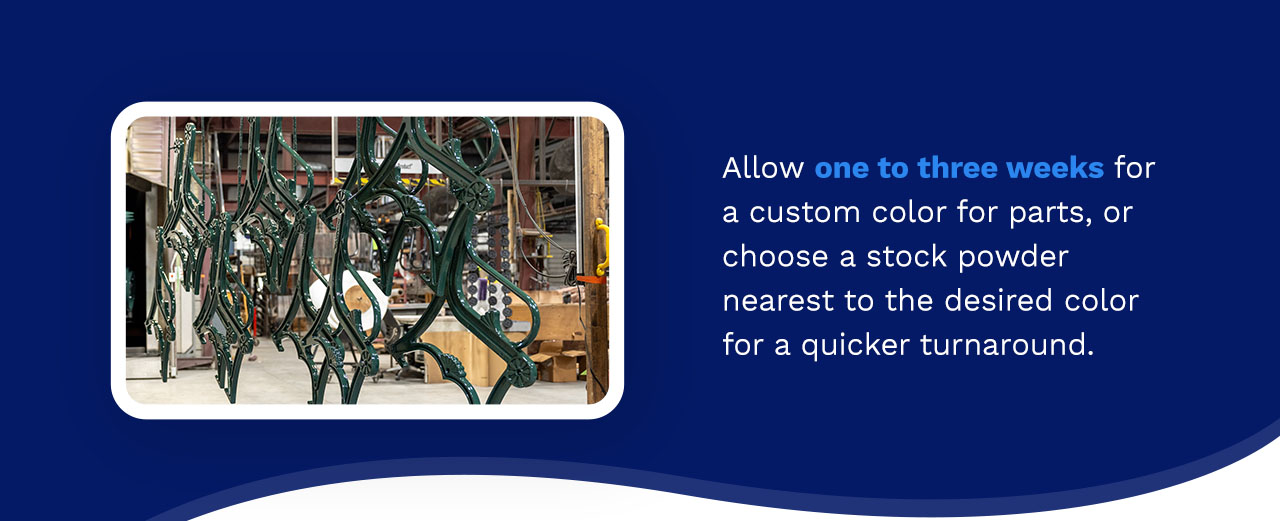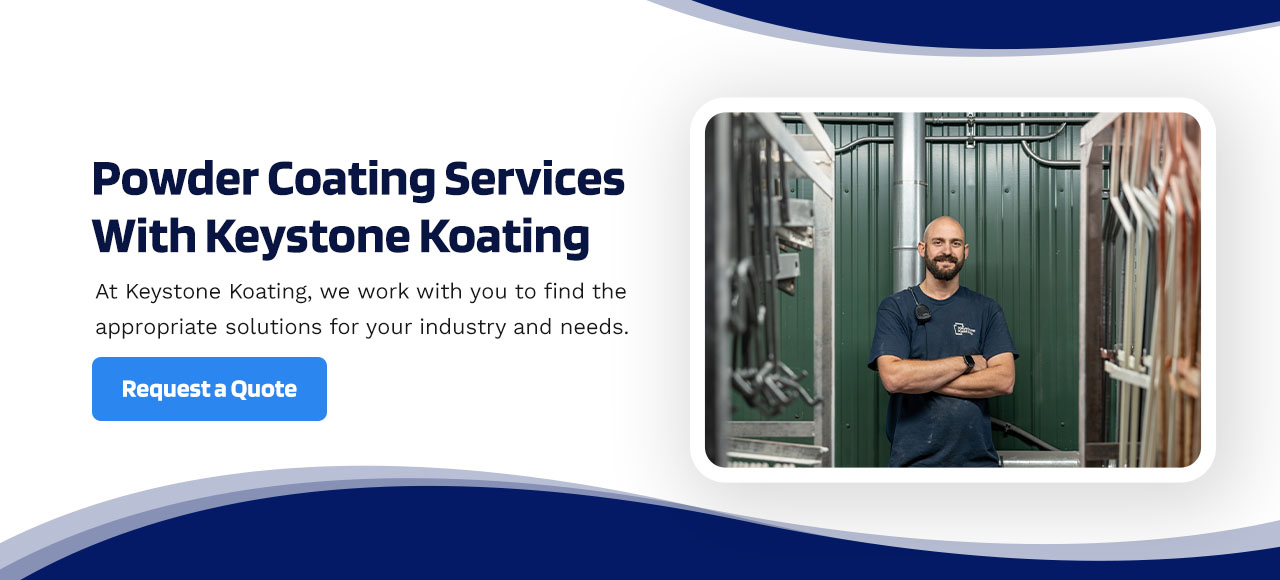
Updated March 26, 2024.
Powder coating provides metal surfaces and parts with a protective and durable shell that can be more resistant to scratching, chipping and fading than standard liquid paints. Because powder coating doesn’t contain solvents or volatile organic compounds typically found in liquid finishes, it can be environmentally friendlier and is less likely to cause irritation if you come into direct contact with it. Additionally, powder coating can provide a clean, cost-effective finish.
Considering the numerous benefits, it is no wonder that more manufacturers are choosing powder coating solutions. A good application is essential to maximize powder coating. Mistakes can happen, and you may run into powder coating problems, but with our decades of experience, we can solve common powder coating challenges and mistakes through actionable solutions you can count on.
1. Faraday Cage Effect
The Faraday cage effect happens when a product’s shape inhibits the electrostatic application of the powder from a particular area, curve or recess. It often occurs when spraying into a part’s corner, and it’s one of the common challenges powder coaters face.
Workers may preheat the metal piece to allow the powder to stick more quickly. However, this is not ideal because heat attracts powder like a magnet, and you could end up with a powder coat that is too thick. A better solution is to adjust the amperage and voltage, turning up the static and turning back the powder. Millage tests ensure proper coverage. The technician burns off the powder and blasts the parts again if the milage test fails.
2. Water Traps and Pinholes
In pretreatment, metals undergo a prewash to ensure a clean substrate. But sometimes, that water might not evaporate in a weld. When hidden under a powder coating, even a tiny droplet can become a huge mess once it hits the curing oven, and the water will boil out of the pinhole. A small air pocket can do the same kind of damage.
Trapped water can cause pinholes, visible after a product goes through the curing oven (above). It’s possible to patch, sand and recoat pinholes.
Manufacturers should have tight, solid welds without pinholes to avoid water damage. Otherwise, they may compromise the visual appearance and timeline. Another effective solution is to patch the pinhole, sand it and recoat. Thorough inspections are crucial.
3. Unclean Substrate
Contamination between substrate and powder will compromise the bond. Manufacturers should verify the proper steel grit or sandblasting removes weld smoke or splatter before coating the product. Metal parts must undergo a thorough washing and rinsing system beforehand.
4. Spray Room Contamination
Changing colors can result in tiny specks of an unwanted color on a run. Thorough cleaning procedures can solve this problem. Changeover clean-down must include the entire system, spray guns and their components.
5. Impurities in the Cast
Sometimes, coating will reveal previously invisible impurities in the metal. Keystone Koating can preheat to remove impurities or use different primers before powder coating. Parts with such impurities may need to run through the line twice.
6. Leeway Time
Lead time is primarily an issue when a client requests a custom powder coating color. Allow one to three weeks for a custom color for parts, or choose a stock powder nearest to the desired color for a quicker turnaround.
7. Application Nuances
Not all powders are alike — there are hammertones, wrinkles and veins. Additionally, some surfaces need a heavier spray than others. Choose a coater with experience applying various powders.
8. Pretreatment Issues
Poor pretreatment could be the issue if the coating doesn’t adhere properly. Waiting too long to coat after pretreatment can also affect how well pieces hold up. Items that lack sufficient pretreatment are more susceptible to rust.
Ensure all your pretreatment processes are thorough — from vapor degreasing to immersion washing. Also, the pieces should remain wet throughout pretreatment.
9. Poor Spray Patterns
When the gun doesn’t apply powder with a consistent mix, it leaves you with an uneven spray pattern, film buildup and powder pigmentation. These challenges can occur due to excessive fluidization — air bubbles forming in the feed when the powder turns to a liquid — or because of residue on the gun’s tip or electrodes.
Check the powder nozzle for wear and replace it if necessary. You can also look for blockages and disconnect the powder feed hose to remove clogs. Also, inspect your powder and coating supply pumps for wear and tear.
10. Improper Powder Application
Applying the powder coating too thickly results in a textured, uneven finish. Pieces with excessive coating may not cure properly, which can compromise durability and cause chipping, peeling or cracking. An overly thin coating that doesn’t provide sufficient coverage can result in rust and corrosion. A thick coating may not adhere to a metal surface, which affects durability.
You can ensure appropriate thickness for the application by following the manufacturer’s guide regarding thickness range and considering the type of coating, substrate material and the piece’s shape and size before you start the application.
11. Incorrect Curing
Curing is the last step in the coating process, and — in many ways — the most critical. It ensures the coating doesn’t wipe off easily, chip or crack.
Follow all the stages of curing carefully. Use an industrial oven set at 325 to 400 degrees Fahrenheit, and allow approximately 25 minutes. Remember that curing temperatures and times may vary depending on the thickness of the coating and the material you use.
Powder Coating Services With Keystone Koating
When you know how to identify and correct common powder coating problems, application becomes easier, and you enjoy all the benefits powder coating offers.
For over 30 years, our knowledgeable and friendly team at Keystone Koating has provided companies in multiple industries with premium, durable powder coating solutions. With our services, you enjoy careful attention to detail and outstanding quality in the powder coating process. We always aim to provide our clients with quality coating solutions.
You can also rely on us for experience and the capabilities to handle large-volume orders. At Keystone Koating, we work with you to find the appropriate solutions for your industry and needs. Contact us today to request a quote and learn more.



